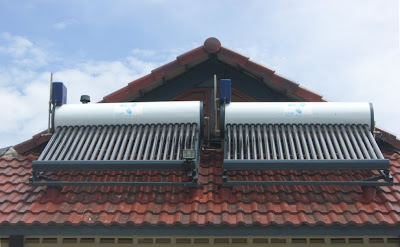 Kong Pharith, a former math and physics teacher from Kampong Chhnang province, uses his knowledge to successfully come up with a solar-energy-powered car.
Kong Pharith, a former math and physics teacher from Kampong Chhnang province, uses his knowledge to successfully come up with a solar-energy-powered car.The sound that was heard earlier was a trial attempt to move a car powered by solar energy and it was a first time that such a car is found in Cambodia. The car is the work of a former math and physics teacher from Kampong Chhnang province. Kong Pharith is this native teacher of Kampong Chhnang.For the idea to come up with such a car, Kong Pharith, who is currently the chairman of the Able Builder Organization and also chairman of the Phnom Penh-based Intelligent Planning Center, indicated that, prior to coming up with this vehicle, he spent about 6 months researching for the right formula. His solar-energy car attempt comes at the heel of his invention of the solar-energy powered bicycle which he was also successful last year.He added that for the solar-energy powered car, he used second-hand parts and assembled them together before adding solar energy cell battery and motor.Kong Pharith said: “for the engine to run fast or slow, if we don’t know how to control it, when the motor is running slow, it is weak because there is not enough electrical power. When it is weak, it cannot pull the car forward, but after researching, we use the PMW [technology]. For the PMW … we use a wave to control the engine to speed up while maintaining the engine power. There were several trials made during the research phase.”Kong Pharith indicated also that his car can carry 2 to 4 passengers at a speed of 30 to 40 km/h. The car itself weights 750 kilos, and the solar cell can produce between 2,000 to 2,430-watt of power daily. The car can be driven between 30 to 40 km per day.He also indicated that if there is no sunlight, or if the driver wants to drive farther, the car battery can be charged by electricity because his car is equipped with a dual battery system.
Kong Pharith said: “Therefore, this car uses a dual hybrid system. We are not relying on solar energy alone, we also have a electrical input to charge the battery, and we can still use it. In the future, we will also add a small [fuel?] engine in there as well. When we want to drive far, we can rely on the additional small [fuel] engine to help the solar power energy move the car forward. Every part is available in Cambodia, so that in the future, if the car breaks down, all parts can be bought from the market for replacement.”Kong Pharith indicated also that for his first attempt to come up with the solar-energy powered car, he spent more than $3,000. He believes that his expense is too high because the parts are expensive, especially the solar cell panel installed on the roof of the car. The cost for a 130-watt solar panel is close to $700 and a small 20-watt solar panel costs about $100.He added: “Some of the parts that we need to buy are transistors which are essentially small semi-conductors. We use them to control the speed of the motor. At first, some of them burnt up and were damaged. We tried other types unsuccessfully, so we have to make several changes, but at the end, we were successful, we found a way to use them with success.”Regarding this solar-energy car, Nget Vibol, director of the patent office of the ministry of Industry, Mines and Energy, said that he knew about this story, and he had also encouraged the inventors.Nget Vibol added that he knew about the car, but he had not met the inventors yet and they had not come forward to apply for a patent yet.Nget Vibol said: “He let us know about this car already, but he must apply for a private patent, so we leave this up to the inventors to decide, we are not forcing them, except to say that some of the technologies used requires other expertise.”Kong Pharith said that he did not apply for a patent yet because he has just completed his research and his car.He said that he will apply for a patent when he can bring his car to the ministry of Public Works for an inspection in the future.

Besides this solar-energy powered car, Kong Pharith also came up with a solar-energy powered bicycle, but because of lack of funding and not many people know or pay attention on his invention. Up to now, he assembled together 4 solar-energy powered bicycles. He indicated also that he recently received some orders for solar-energy bicycles from overseas, including from France.“I don’t dare produce too many of these bicycles because each one of them costs between $300 to $400. We try to lower the cost, but we were not able to. Lowering the cost means lower quality. Steel bicycles are too heavy, therefore we must decrease their weight. For the solar powered car, I want to decrease the weight also, because the lighter they are, the better they are,” Kogn Pharith said.He indicated also that, besides coming up with his ideas, he also tries to teach others [on the technology]. He usually charges $200 for the 2-month training, however, for poor students from the provinces, he teaches them free of charge. He currently has 10 students learning under him.








